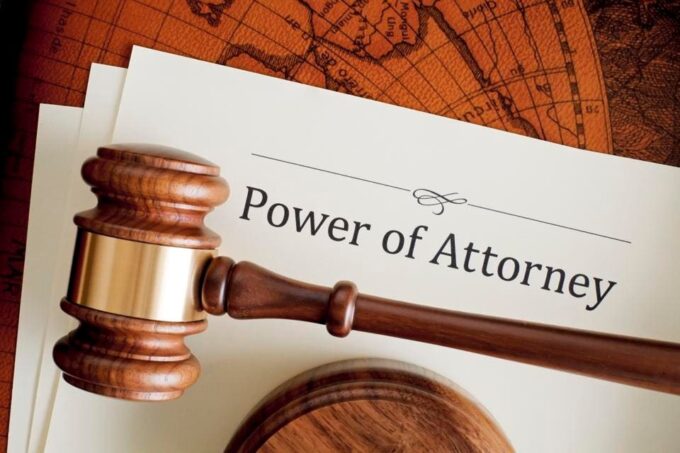Revoking a Power of Attorney (POA) is a process that individuals may need to undertake to terminate the legal authority previously granted to another person, known as the agent or attorney-in-fact, to make decisions on their behalf. The reasons for revocation can vary, including a change in circumstances, the fulfillment of the POA’s purpose, or dissatisfaction with the agent’s decisions.
This article aims to provide an educational overview on how to effectively revoke a Power of Attorney, covering key considerations and steps to ensure that the termination of legal authority is executed properly and legally.
Power of Attorney

Source: forbes.com
Before delving into the revocation process, it is crucial to understand what Power of Attorney entails. A POA is a legal document that allows one person, the principal, to appoint another person, the agent, to make decisions on their behalf. Derfel estate law can help you handle all those documents.
These decisions can relate to financial matters, health care, or any other domain specified within the document. There are different types of POA, such as Durable, Non-Durable, Springing, and Medical, each serving different purposes and having varying degrees of authority and conditions.
Reasons for Revocation
The decision to revoke a Power of Attorney (POA) can be prompted by several reasons. A principal might regain the ability to manage their affairs after a period of incapacity, or they may no longer trust or require the services of their current agent.
Changes in personal relationships, such as divorce or estrangement, can also necessitate the revocation of a POA. Additionally, the principal might wish to appoint a different agent due to relocation or the agent’s inability to serve due to illness or death.
Legal Requirements for Revocation

Source: freepik.com
The revocation of a Power of Attorney must comply with the legal requirements of the jurisdiction in which it was issued. Generally, the revocation must be in writing and clearly state the principal’s intention to terminate the powers granted to the agent.
The document should identify the original POA by date and parties involved and must be signed and dated by the principal, often in the presence of a notary public to ensure its validity.
Effective Communication of Revocation
Merely drafting a revocation document is not sufficient to terminate the POA’s authority. The principal must communicate the revocation to the former agent and any institutions or individuals that were aware of the original POA, such as banks, healthcare providers, and legal entities. This step is critical to prevent the former agent from continuing to act under the authority of the now-revoked POA.
Filing the Revocation
In some cases, especially where real estate transactions are involved, the revocation document must be filed with the same public office where the original POA was recorded. This ensures that the revocation is public knowledge and prevents the former agent from conducting transactions on behalf of the principal.
Creating a New Power of Attorney

Source: freepik.com
After revoking a POA, the principal may wish to create a new Power of Attorney document to ensure that their affairs can still be managed according to their wishes. This involves selecting a new agent and drafting a new POA document that reflects the current desires and circumstances of the principal. It is advisable to consult with a legal professional to ensure that the new POA is comprehensive, legally valid, and accurately reflects the principal’s intentions.
Avoiding Common Pitfalls
Several common pitfalls can complicate the revocation process. Failure to notify relevant parties of the revocation can result in the continued unrecognized authority of the agent.
A poorly drafted revocation document that does not clearly invalidate the original POA can lead to legal ambiguities. Principals should also be wary of revoking a POA without having a new one in place if they require ongoing assistance with their affairs.
FAQs
Can I verbally revoke my Power of Attorney?
While verbal revocation may be considered informally notifying the agent of your intention to revoke their authority, it is not legally sufficient to terminate a Power of Attorney. Legal requirements typically mandate that the revocation be in writing, signed, and, in some cases, notarized to ensure its validity and enforceability. Verbal revocation should be followed up immediately with the formal, written revocation process to legally terminate the POA.
How quickly can a Power of Attorney be revoked?
The revocation of a Power of Attorney can be effective immediately upon completing the required legal steps, which include drafting the revocation document, signing it (preferably in the presence of a notary public), and notifying the agent and any relevant institutions of the revocation. The speed at which a POA can be revoked largely depends on how quickly these steps can be completed and the cooperation of the agent and institutions in acknowledging the revocation.
Does revoking a Power of Attorney affect decisions made by the agent before the revocation?

Source: freepik.com
No, revoking a Power of Attorney does not retroactively invalidate decisions or actions taken by the agent while they legally held the authority. The revocation only affects the agent’s ability to make decisions or act on behalf of the principal from the moment of revocation onwards. It is crucial to consider the timing of revocation and to communicate it effectively to avoid unintended consequences.
Can a Power of Attorney be partially revoked?
Yes, it is possible to partially revoke a Power of Attorney if the principal wishes to remove certain powers but allow others to continue. This requires a clear and specific written document that delineates which powers are being revoked and which remain in effect. Given the complexity of partial revocations, it is advisable to consult with a legal professional to ensure the document accurately reflects the principal’s intentions and complies with legal standards.
Final Words
Revoking a Power of Attorney is a significant legal action that requires careful consideration and adherence to legal procedures. By understanding the types of POA, recognizing valid reasons for revocation, and following the steps for legally terminating the agent’s authority, principals can ensure that their wishes are respected and their affairs are managed according to their current needs and preferences.
Consulting with a legal professional can provide valuable guidance throughout this process, helping to avoid common pitfalls and ensuring the effective execution of the revocation.







